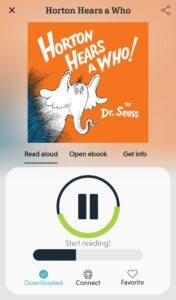As seen on FB (Link: https://www.facebook.com/share/p/51vePn1ynAr4jVo2/)
Future of the Book
Books of the future should be:
-- connected -- adaptable -- flexible -- customized --
Thursday, July 18, 2024
Wednesday, July 17, 2024
Learn to create a Digital Book using Pages for Mac or iPad
Creating Digital Books with Mac and iPad is a free resource available in the Apple Bookstore.
Publisher Description
Writing and publishing a book might seem daunting, but don't worry. This guide, developed especially for educators, shows you how incredibly easy it is to design, create, and share your own professional-looking digital books using Pages on iPad or a Mac. Filled with step-by-step instructions, detailed screenshots, photos, illustrations, audio, and video, Creating Digital Books on Mac and iPad covers what you need to know about planning the structure of a book, working with text, illustrating with objects, adding media such as audio and video, building in navigation links, and much more.
This book goes beyond a simple user guide, providing useful design tips and suggestions for increasing the educational value of what you publish using Pages. Whether your objective is creating new resources tailored to your community's needs or breathing life into your existing curriculum, this guide will help you produce fun, immersive digital books that gets students more excited about what they're learning.
Tuesday, August 13, 2019
Consider using Novel Effect to make reading much more fun!
https://blog.tcea.org/reading-with-novel-effect/
TAKE READING TO THE NEXT LEVEL WITH NOVEL EFFECT
Creating an Effect
 That’s exactly what the creators of Novel Effect hope to do. The free app for both Apple and Android allows you to read a book aloud while it provides special effects and relevant audio. Instead of speech-to-text, think of this as speech-to-sound effects. As you are reading out loud, the app listens and provides audio to enhance the reading. Leaves rustle, animals howl, and footsteps crackle as you tell your tale, adding life to every line and engaging your audience.
That’s exactly what the creators of Novel Effect hope to do. The free app for both Apple and Android allows you to read a book aloud while it provides special effects and relevant audio. Instead of speech-to-text, think of this as speech-to-sound effects. As you are reading out loud, the app listens and provides audio to enhance the reading. Leaves rustle, animals howl, and footsteps crackle as you tell your tale, adding life to every line and engaging your audience.Suggested Classroom Uses
Tuesday, February 2, 2016
When will you be ready to give up paper?
 |
| Philadelphia's Christ Church "Vinegar" Bible |
Monday, April 21, 2014
Pages 5.2 update brings improvements to ePub creation
From: http://www.macworld.com/article/2140800/making-ebooks-in-pages-5-2-heres-what-works-now-and-what-still-doesnt.html
For example, you can now manually insert page breaks into an ebook by using Pages’s break tools, rather than having to use the template’s “Chapter Heading” template to do so.
But that’s not all: The Pages 5.2 update last week actually mentioned “improved ePub export” in its release notes, and added a few more fixes. That’s right: Not only did someone take the time to improve ePub export for Pages 5.0, but they seem to actively be working on making it better with future releases.
....
You (mostly) don’t need Apple’s four-year-old ebook template: Because the export recognizes page breaks and section breaks, you can use those along with custom text styles to create your ebook table of contents—you don’t have to download Apple’s template. That said, Pages takes a shortcut here with its text styling; if you look at the code of your resulting export, all text styles come out as various CSS classes for the paragraph tag.
As much as I love iBooks Author and the awesomeness of multi-touch ebooks, the ability to create a document that is "ePub 3" compliant, allows a wider audience beyond those possessing only iPad or Mavericks OS.
Saturday, April 12, 2014
Paper Books vs. eBooks? Research prompts more questions...
One item to consider in evaluating the research presented by Schugar and Schugar at last week's American Educational Research Association's (AERA) Annual Meeting, is the definition of "e-Books." Access to digital text and e-Readers is quite varied across computing devices. For instance, some eBooks are actually "apps" — dedicated stories that often contain multi-media components, and are not viewed using an eReading device or dedicated eReader application.
Is it too soon to make judgement on the value of digital text over paper-based books? Based on the comments posted to the author in this article, I have more questions than answers — perhaps you will too.
Sunday, November 3, 2013
Customized: Build Curriculum for any Mobile Device
If you can drag-and-drop, you can build an eBook. In this Sept. 4, 2013 webinar hosted by the NMC Horizon Project, Digital Wish's Executive Director, Heather Chirtea demonstrates how to build digital eTextbooks, activities, and lesson plans with very simple drag-and-drop skills through a computer's browser. Digital content can be saved as an app that can be downloaded to any smartphone, tablet, Apple or Android device.
Teachers can sign up for a free eBuilder account at http://www.digitalwish.com/dw/digitalwish/ebuilder. Completed eBooks are hosted on a "Marketplace" channel within the eBuilder account.

